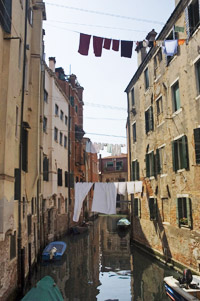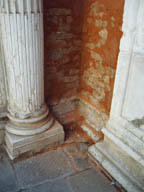Marina Karem
Before Memory Fades Away
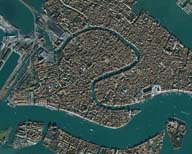 I call it MY city both because it is the location where I happened to be born, in the shadow of the Rialto bridge, in fact, and because like all Venetians I have a rather strong proprietary attitude towards it.
I call it MY city both because it is the location where I happened to be born, in the shadow of the Rialto bridge, in fact, and because like all Venetians I have a rather strong proprietary attitude towards it.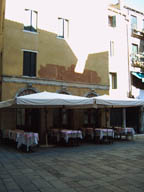 The nearby Campo Malibran was simply another room of my home, a separate play-room, as it were, where children could meet in freedom and security. The Venice I experienced growing up in the fifties was neither the mythical city skillfully portrayed in the teleri of Giovanni Bellini and Carpaccio nor even the more prosaic one immortalized in the later vedute of Canaletto or Guardi. It was simply my home, an extension of myself in space. The pathways in my brain were formed by the gentle sounds of water lapping on slippery, moss-covered steps, by pigeons cooing in the early morning hours, by the mournful "Ooohee" of the gondolier at the corner of the canal and by the myriad peculiarities in the sights, sounds and scents of Venetian life. What affected most, though, was the quality of light. I remember stopping at various canals, both on my way to school and on returning home, enchanted, mesmerized by the way colors were not simply absorbed in a watery grave but spread around to diffuse into the atmosphere. I never pondered much over the sensation of pure happiness which I derived from that phantasmagoric display; I simply enjoyed it.
The nearby Campo Malibran was simply another room of my home, a separate play-room, as it were, where children could meet in freedom and security. The Venice I experienced growing up in the fifties was neither the mythical city skillfully portrayed in the teleri of Giovanni Bellini and Carpaccio nor even the more prosaic one immortalized in the later vedute of Canaletto or Guardi. It was simply my home, an extension of myself in space. The pathways in my brain were formed by the gentle sounds of water lapping on slippery, moss-covered steps, by pigeons cooing in the early morning hours, by the mournful "Ooohee" of the gondolier at the corner of the canal and by the myriad peculiarities in the sights, sounds and scents of Venetian life. What affected most, though, was the quality of light. I remember stopping at various canals, both on my way to school and on returning home, enchanted, mesmerized by the way colors were not simply absorbed in a watery grave but spread around to diffuse into the atmosphere. I never pondered much over the sensation of pure happiness which I derived from that phantasmagoric display; I simply enjoyed it.
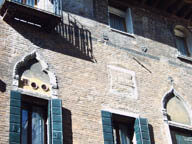
I left Venice when I was still young, traveling around Europe at first, and finally settling in the U.S. But I returned home every Summer to stay at my mother's house; the house in which I was born. Every time I went back, I saw changes all around the city; changes that occurred gradually at first, and then with increasing and disturbing frequency. These affected both the aesthetic of the city as well as its urban life and were not as noticeable to the permanent residents simply because they had time to adjust to them gradually. However, I noticed immediately, or, rather my body would register the generally negative changes. For this reason and because memory is evanescent, I would like to record some of the most obvious alterations that have affected my own neighborhood. I shall limit most of my reflections to the narrow space of my childhood both because I know it well and because it is historically relevant (and therefore more in need of caring preservation) since it was the area where the merchant/explorer Marco Polo had lived in mid-thirteenth century.
If I close my eyes, I can still see the quality of light in the Salizada San Giovanni Grisostomo, around the Ponte dell'Olio, where the deep, muted red of the plaster in the Fontego dei Tedeschi's wall reflected in the water of the Grand Canal, radiating a warm, luminous glow into the atmosphere. My Venice, the Venice of over half a century ago was a colorful city. Not colorful like the island of Burano, where the constant re-plastering of old buildings has produced a cacophony of strident hues, but rather a city whose colors, like good wine, had developed characteristics achieved only through the mellowing of time. It was an understated, dignified look, as if the city could remember a time of splendor and bask (like an impoverished noblewoman) in the aftermath of an illustrious past. The area around the Fontego dei Tedeschi, only a few steps from my house, was always lively. Fifty years ago, the ancient Fontego was (as today) the central Post Office of the city. However, on the façade close to the Rialto bridge, a number of small spice and oil shops preserved the original function of the Medieval building: a mercantile exchange for the German merchants in Venice. The pungent scents of nutmeg, cinnamon, clover and other more mysterious spices permeated that space in 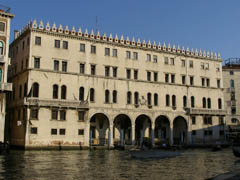
The Campo Malibran and Corte del Milion, just around the corner from my house, were my playground. Most of my friends lived in that neighborhood. Valerio, Roberto and Elisabetta, the children of the owner of the bar "Ai Pesci Rossi" located at the corner of the Corte del Milion, lived just across the bar, in a house which, as a plaque on its façade proudly proclaimed, had been formerly occupied by Marco Polo. Carla, the daughter of the shoemaker, whose shop was a busy little cubicle in the corner of the Campo Malibran, did not live nearby but spent most of her time in her father's shop. She was always considered one of us. I remember Marina and Patrizia, the daughters of the owner of the Hotel Malibran and the boy whose father (by his own admission) was in and out jail. There was Tonino whose mother was a "screamer." Her formidable voice could be heard from Campo to Campo, and Gianna, Cristina and Bianca, the girls in my own Calle, who could be summoned anytime with just a shout of their names.
My apartment had a large window in the dining room which was covered with an ancient latticework. It allowed for a few inches of space where I could sit on the windowsill to chat with my friends two yards away, across the Calle. The proximity of space and the intimate sharing of our lives was comforting. In the Summer we would open the big, rusty gate at the end of the calle to sit on the stairs on the bank of the Grand Canal. From that secluded spot we faced one of the most renown views in the world: the Rialto bridge and market.
With the help of the shoemaker's daughter, I took care of the half dozen (or more) stray cats who lived in the Campo Malibran. For reasons known only to them, these cats congregated only in that particular area and not in the adjacent Corte del Milion or Campo San Giovanni Grisostomo. We stored our bowls and food supplies inside an opening of a wall, about five feet above the pavement, in the dark space of a Sotoportego (under-passage) between the Campi Malibran and San Giovanni Grisostomo. This was our secret space. 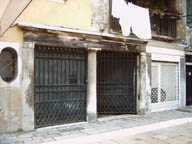
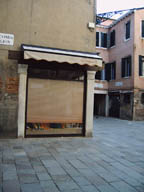
The cats have disappeared. An urban legend says that the Chinese immigrants have eaten them. Who can tell? It is a fact, though, that there are no more cats in a city known for their proliferation. In its quest for expansion, the Hotel Malibran has gradually taken over much of the space around the Campo, cluttering the neighborhood with tables and chairs and filling every available inch of space with service-industry paraphernalia.
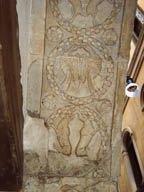
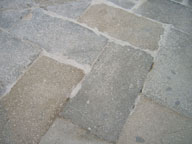
In the early fifties my salizada was filled with little stores, owned by neighborhood people. There was the old lady who owned the millinery shop near the pasta store who would also come to my house to administer the injections my doctor all-too-often prescribed. I can still remember the sound of her heavy gait walking, syringe in hand, towards my room. There was the coffee shop which emanated the pleasant aroma of freshly toasted coffee throughout the neighborhood and the perfume shop which emanated yet different types of pleasant scents. There was the ancient coin dealer who also kept interesting antique jewelry. There was the fruit and vegetable stand at the church's corner, selling apples, pears and grapes with strange-sounding names. There was the old man nicknamed the "muto" (he was, indeed, mute) who had set up an umbrella repair-shop in a cubicle, just about a yard wide in the Salizada San Giovanni Grisostomo. This street is now almost entirely occupied by the large Coin department store; a store which started its original clothing business in a tiny store, just a few yards down the street but, in time, bought out almost the entire block between the church and the Ponte dell'Olio, dislodging most of the families in the neighborhood.
The Venice I lived in was, then as now, filled with pigeons. Birds and people seemed to coexist, if not harmoniously, at least peacefully. Recently, a silent but obvious war against pigeons has been declared. In my Calle, Salizada and nearby Campi (and, indeed, throughout the city), both City Hall and private citizens have installed in the pigeons' familiar roosting places the weapon of choice: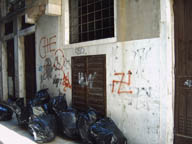
The assault on the city seems to come not only from the outside but from within the city as well. Until recently, the little church of San Giovanni Grisostomo, located just below my windows in the Salizada bearing its name rang its beautiful ancient bells; a familiar, joyful sound to which I awoke every morning of my childhood. Recently, the church has started to use electronic bells whose sound is artificial and jarring; a remainder of yet another capitulation to life's modern conveniences. The church has been recently restored; some minor fixing-up in the interior and the re-plastering of the exterior. This restoration has completely ruined the exterior of the church. Even before the completion of the work, the plaster-work (intonaco) was disintegrating into a fine powder. 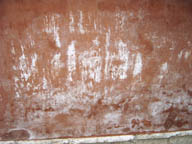
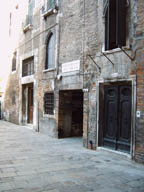
When I was growing up, I never saw a sea-gull except at the beach on the Lido. Now the sea-gulls have come to the city. They have quickly learned to puncture the plastic garbage bags set out by grocery stores and restaurants, scattering putrid scraps while filling the air with unpleasant squawks. Even rats, a constant presence in the city, have recently started to unabashedly promenade in full daylight, scouting for new feeding grounds.
The water of the lagoon and canals has become extremely polluted.. Fifty years ago, it was not unusual for people to swim in some of the canals. The water was clean. So clean, in fact, that after I was hurt in a vaporetto accident, someone poured lagoon water over my open wounds. They never became infected and healed perfectly.
The noise of motorboats is now a constant as is, of course, the ringing of cell phones. The droning of air-conditioning, a sound magnified by the damp atmosphere of the city, is now heard everywhere. Often set out at street level, these portable air conditioners emit very hot air, adding to the misery of the population during the hot and crowded Summer months.
Amazingly though, despite all the problems that recent changes have brought to the city, the Venetians seem to have a never-ending capacity to adjust and make light of very stressful situations as if, indeed, Venice were still, as the words of a forgotten poet proclaimed long ago, a "splendida lettiera dove si addorme ogni duol.....(a splendid couch where all troubles can find rest).
View the summary - Click to download: >

Back to NEH Institute, July 2006
